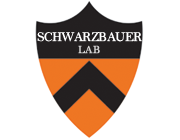Self-assembled monolayers of alpha,omega-diphosphonic acids on Ti enable complete or spatially controlled surface derivatization.
Type
Alpha,omega-diphosphonic acids self-assemble on the native oxide surfaces of Ti or Ti-6Al-4V. Heating gives strongly bonded phosphonate monolayers. Infrared and X-ray spectroscopic and water contact angle data show that the films are bonded to the surface by one phosphonate unit; the other remains a phosphonic acid. Surface loadings were measured by quartz crystal microbalance procedures. Mechanical shear strengths for the films were also measured; these do not correlate simply with surface loadings. Films formed from 1,12-diphosphonododecane were treated with zirconium tetra(tert-butoxide) to give surface Zr complex species; derivatives of these surface complexes are stable to hydrolysis under physiological conditions and are mechanically strong. The complexation reaction can be accomplished over the entire surface; alternatively, dropwise application of the alkoxide to the surface enables spatial control of deposition. The cell attractive peptide derivative RGDC can be bound to these surface Zr alkoxide complexes through (maleimido)-alkylcarboxylate intermediates. Surfaces modified with RGDC were shown to be effective for osteoblast binding and proliferation.

